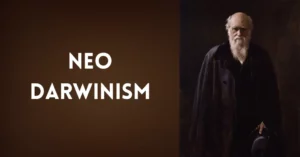AI Answer Evaluation Platform Live Now. Try Free Answer Evaluation Now
Pre-Darwinian Theories of Evolution
The theory of evolution, proposed by Charles Darwin in the mid-19th century, revolutionized our understanding of the natural world. However, before Darwin’s seminal work, there were several pre-Darwinian theories of evolution that laid the foundation for his ideas. These early theories, though incomplete and sometimes flawed, contributed to the gradual development of evolutionary thought. In this article, we will explore some of the prominent pre-Darwinian theories of evolution and their key principles.

- Lamarckism: The Inheritance of Acquired Characteristics Jean-Baptiste Lamarck, a French naturalist, proposed Lamarckism, also known as the theory of inheritance of acquired characteristics. Lamarck suggested that organisms can pass on traits acquired during their lifetime to their offspring. According to Lamarck, if an organism develops a particular feature through its environment or behavior, it can transmit that trait to the next generation. For example, a giraffe’s elongated neck was believed to have evolved as a result of generations of giraffes stretching their necks to reach higher leaves. However, Lamarckism was later discredited due to lack of evidence for the inheritance of acquired characteristics.
- Catastrophism: Extinction and Replacement Catastrophism, popularized by French naturalist Georges Cuvier, proposed that Earth’s history is marked by periodic catastrophic events that caused the extinction of certain species. Cuvier suggested that after each catastrophe, new species emerged to replace those that were lost. This theory highlighted the idea that Earth’s history is not static and that species are not fixed entities but rather subject to dynamic changes. However, catastrophism fell out of favor as scientific evidence for gradual changes and the concept of deep time accumulated.
- Transformism: Species Transformation over Time Transformism, advocated by the French naturalist Jean-Baptiste Lamarck and later by the Scottish geologist Charles Lyell, posited that species gradually transform into new forms over time. Transformists believed that existing species could change and give rise to new species through a process called transmutation. They emphasized the idea of species as fluid entities, constantly adapting to their environment and evolving into new forms. Transformism laid the groundwork for the concept of species mutability and contributed to the acceptance of evolution as a dynamic process.
- Natural Theology: Design in Nature Natural theology, often associated with the theologian William Paley, attempted to reconcile the existence of a divine creator with the observable natural world. It argued that the intricate complexity and design found in nature are evidence of a divine plan. Natural theologians pointed to various adaptations in organisms as proof of intelligent design. While not explicitly proposing an evolutionary mechanism, natural theology set the stage for future debates on the relationship between science and religion in the context of evolution.
- Uniformitarianism: Gradual Geological Processes Uniformitarianism, championed by Charles Lyell, suggested that the Earth’s geological features and processes are the result of gradual, ongoing forces that have operated over long periods of time. Lyell’s ideas challenged the prevailing view of catastrophism and emphasized the role of gradual change in shaping the Earth’s surface. Uniformitarianism provided a framework for understanding the slow, continuous processes that could potentially account for the long-term changes required for evolutionary processes.
In summary, the pre-Darwinian theories of evolution played a crucial role in paving the way for Charles Darwin’s groundbreaking ideas. While these early theories had their limitations, they introduced key concepts such as species transformation, inheritance of acquired characteristics, and the recognition of geological processes. Darwin built upon these foundations, eventually presenting the theory of evolution by natural selection, which revolutionized our understanding of life on Earth. Darwin’s theory incorporated the principles of variation, heredity, and natural selection, providing a comprehensive explanation for the diversity and adaptation of species.
Although the pre-Darwinian theories discussed in this article were ultimately incomplete or flawed, they played an important role in shaping the intellectual landscape of their time. They challenged prevailing notions of fixity and provided alternative perspectives on the origin and transformation of species. The gradual accumulation of knowledge and scientific evidence eventually led to the formulation of Darwin’s theory, which provided a powerful framework for understanding the complexity and diversity of life.
Darwin’s theory of evolution by natural selection represented a paradigm shift in our understanding of the natural world. It explained how species change over time in response to environmental pressures, highlighting the crucial role of variation and differential reproductive success. Darwin’s work laid the foundation for modern evolutionary biology and continues to be supported by an extensive body of evidence from various scientific disciplines.
It is important to recognize the contributions of pre-Darwinian thinkers, as their ideas and debates set the stage for the revolutionary breakthrough that Darwin achieved. Their theories, though imperfect, provided stepping stones toward the development of a comprehensive and evidence-based theory of evolution. By building upon these earlier concepts, Darwin was able to present a cohesive framework that forever changed our understanding of life’s history and diversity on Earth.
Conclusion
In conclusion, the pre-Darwinian theories of evolution, including Lamarckism, catastrophism, transformism, natural theology, and uniformitarianism, laid the groundwork for Darwin’s groundbreaking ideas. While each theory had its limitations, they contributed to the gradual development of evolutionary thought and played a vital role in shaping the scientific revolution that followed. Darwin’s theory of evolution by natural selection built upon these early ideas, providing a comprehensive explanation for the origin, adaptation, and diversity of species that continues to be the cornerstone of modern biology.



